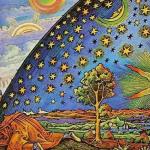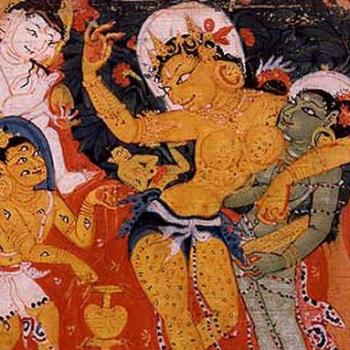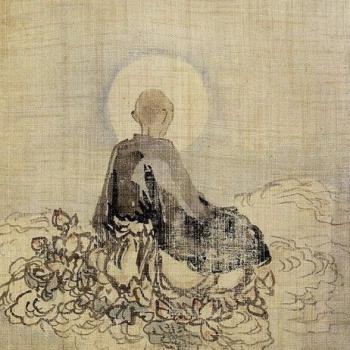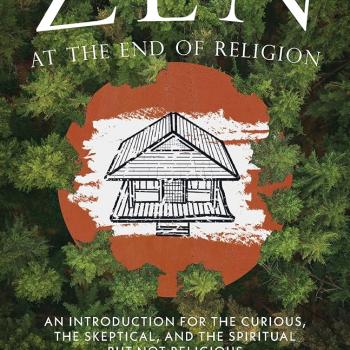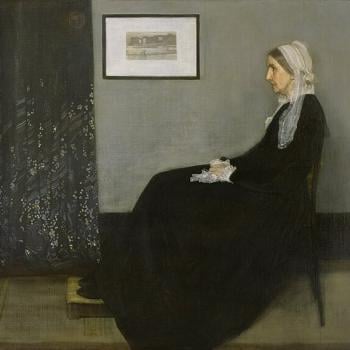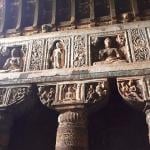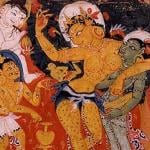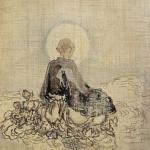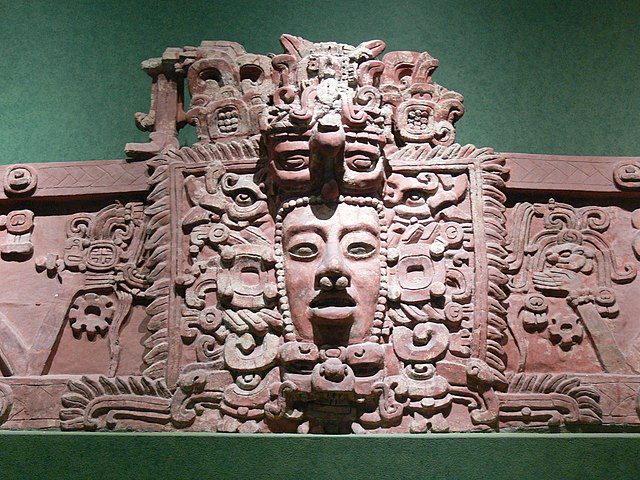
Nothing truly real is forgotten eternally, because everything real comes from eternity and goes to eternity.
Paul Tillich, the Eternal Now
August the 11th is a very interesting date. In the famous Mayan long count calendar, the beginning of it all is, in our Gregorian translation, the 11th of August in 3114 before our common era.
Mostly when I think of calendars I find myself considering beginnings.
January 1st in our culture, now a meta cultural thing noticed pretty much everywhere around the globe, even when other more ancient forms of counting time exists.
I’m also intrigued by first days. So, July 16th, for instance.
counted in Islamic culture marking when Mohammed and his companions fled from Medina on that date in 622 (according to the good old Gregorian). And it becomes the Islamic New Year.
Of course my favorite has to be the beginning marked out by James Ussher, then the Anglican Archbishop of Armagh, and Primate of All Ireland. Through a very rational investigation of the genealogies of the Bible, he established the creation of the world on the 23rd of October, in the 4004th year before the common era. A good start.
Going back to the 1st of January. And why. One might think the new year should be marked by a solstice or an equinox. While it is true this season roughly is when the Earth is closest to the sun, it doesn’t appear the ancients were aware of this. Instead there’s some speculation that this date follows a tradition that dates to 153 before the common era when the Romans started dating years from the inauguration of the term of the two consuls who ruled for a year. And that beginning was the festival of Janus, the two-faced god of doors and beginnings. It was then enshrined in Julius Caesar’s reformed calendar which would eventually become normative throughout the empire, and therefore much of Europe and the Near East, although March somewhere in the neighborhood of the equinox gave 1 January a bit of a run for its money for quite a while, but was finally established for Europe and anywhere Europe exercised its muscle with the Gregorian reform of the Julian calendar.
The Chinese new year follows a lunar calendar with solar corrections on a regular basis, and falls somewhere been January 21st and February 20th. Wikipedia tells me that while we do a traditional numbering from the reign of the Yellow Emperor three thousand years before the common era, this seems more an adaptation of overseas Chinese than something observed in China itself, and for those who use this date, there are three different ones to choose between.
India, on the other hand, never seems to have established a common counter for the sub continent. Although dates associated with the spring seem most popular. Africa has a similar lack of a continent wide date, although in North America and elsewhere within the African diaspora the Yorba Odunde festival, which takes on the 2nd of June is increasingly popular. Similarly, the indigenous peoples of the Americas have no commonly accepted date, although spring remains popular. One exception to that general rule is the Pueblo peoples, who mark the 22nd of December, which is a bit closer to the seasonal markers than the 1st of January.
A bit of digging around the web reveals the earliest recorded celebration of a “new year” took place in Mesopotamia somewhere in the neighborhood of two millennia before that common era. I understand most inhabitants of the ancient Near East, foremost among the the Egyptians started their new years on the autumnal equinox. While the Greeks liked the winter solstice.
It appears for a number of reasons, not least the near world dominance of European colonialism up until relatively recently has made the Gregorian calendar the calendar. With the notable tweak of dropping the term AD, Anon Domino, in the “Year of our Lord,” and with it BC meaning Before Christ in favor of the more neutral “Before the Common Era,” and “After the Common Era.” This has been helped along by the fact the dating going back to Jesus’ birth is generally considered to be off by somewhere between four and six years, and had nothing to do with the first of January. Still, for some the dating is a bitter pill. Again, thanks to Wikipedia, I see that the religious studies scholar Raimon Panikkar spoke for many when he contends that using the designation BCE/CE is a “return… to the most bigoted Christian colonialism” towards non-Christians, who do not necessarily consider the time period following the beginning of the calendar to be a “common era.”
It is hard to miss the colonialist implications of continuing the Gregorian calendar. On the other hand former United Nations Secretary-General Kofi Annan argues, “[T]he Christian calendar no longer belongs exclusively to Christians. People of all faiths have taken to using it simply as a matter of convenience. There is so much interaction between people of different faiths and cultures – different civilizations, if you like – that some shared way of reckoning time is a necessity. And so the Christian Era has become the Common Era.”
All that noted, I find with the Maya long count a small bubbling of thoughts on the end.
Not all that long ago, because one version of the Mayan calendar ended in 2012, it became quite a vehicle for people looking for end times. A perennial of the human heart. As well as for those who like to make money off people looking for end times.
It looks like some people did very well with that particular end time…
Of course ends of the world abound. Religions love ’em. In Judaism, Christianity and Islam, following, it would appear, Zoroastrianism, time runs on a straight line toward one great end. But there are other ways to engage the idea. For instance in Buddhism and Hinduism end times tend to be the end of cycles in what appear to be an endless spiral.
In contemporary popular culture we’ve introduced any number of variations on the theme. We continue to get various second rate prophets regularly predicting ends with varying degree of media hype. Also, some New Agers buy into end times with considerable enthusiasm. The Long Count calendar being a most recent version. But, also I recall 1987’s Harmonic Convergence, one of the more benign versions of end times as great shifts.
Even secular versions proliferate. I still vividly recall friends stocking up on goods in anticipating of airplanes falling out of the sky for Y2K. And, even I find my heart strings tugged by the idea/prediction of the Singularity propagated by Ray Kurzweil and others, that moment when artificial intelligence achieves sentience. A moment where I personally would hope our new overlords at least find us amusing…
So, there we are.
I suspect most end of the world schemes are projections of our individual body knowing we all will die, that each and every one of us will indeed come to an end of time, and space, and, well, pretty much everything…
And without a doubt there are ends coming. The Buddha was brutally right when he said everything composed of parts will come apart. And, we are all made up of parts. And somewhere in our bodies, we know this. Even if not consciously our bodies know there is an end.
When it comes to consciousness, or even if it is only bubbling below the surface, it’s part of our live. So, small wonder some hope for an escape pod. The most common fantasy is that “I,” the composite of causes and conditions that coalesce for a moment as “me,” is not really from this place, which will at the appropriate time, escape this mortal coil and go on to a rightful place…
Heaven. Hell. A new life.
It brings to my imagination that old movie When Worlds Collide. It was made in 1951 and had a half life on television re-running any number of times during my childhood. I recall the tingle of hope as the passengers on the escaped rocket ship crash lands and in full technicolor (considering we didn’t have color television, either I saw it in theaters as well, or my lovely and ever imaginative memory has filled in the color…) everyone walks into the landscape of their, our, new home world.
So, here we are. In our own moment. A moment with its own dreams of beginning. And its own dreams of endings.
Now, I think we can take this all in a number of ways.
For one. We can just embrace each new end time as true. Make peace with various storm deities or stock up on guns and energy bars. But I have to admit this doesn’t work for me.
For another. We can dismiss it all. I have inclinations in that direction. I know I’ve pretty consistently made fun of my friends who bought into the Harmonic Convergence and then again with Y2K and, while I didn’t seem to have too many friends into the Long Count apocalypse, I didn’t pass on the chance to mock it.
But, then I think of the Singularity. And the hard fact we all do die. Real death.
And, I find myself forced to look a bit deeper, and even, maybe, a tad more compassionately. There is something important within this intuition of an end.
Here we are in fact swimming into deep waters. Reality is in fact more complex than any of our stories about it. While death is an inevitability, each moment seems in fact to live for ever in some very real sense. This is not a fabrication, it is a truth. Everything exists forever in one very real sense.
There is just now. It is not the past. It is not the future.
And. The half life from past to present can be sliced to infinity even as the half life from now to the future can be cut infinitely. Also, I suspect, strongly, the relentless singular direction of time is only part of the truth. Time and matter seem to be part of one thing that taken together doesn’t actually look like matter and time rushing from the past toward the future…
And, more important, these things are not simply ideas we can play with, they point to something our human mind/bodies seem able to know in a sense similar to how we know a broken arm or a kiss.
The secret is found in presence.
It is always about presence. This mysterious reality, where beginnings and endings vanish, time itself suspends, and the face of God is revealed. The moment. This moment.
When we don’t turn from the end, we in fact also find the beginning. And in that moment, In that fraction of a moment.
Worlds birth.
Worlds collapse,
Words collapse as we face into the gift of this moment.
The eternal now.
The place where we find our saving.


